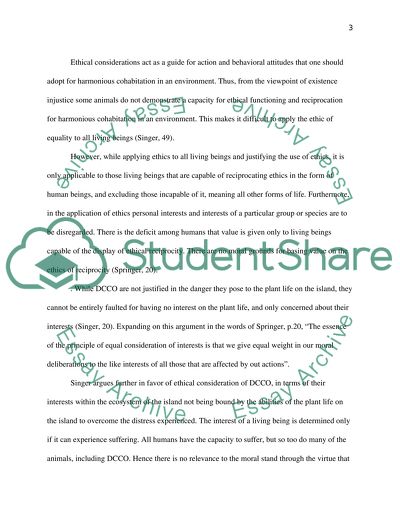Ethics of Culling Doubled-crested Cormorants Essay - 1. Retrieved from https://studentshare.org/philosophy/1592087-ethics-of-culling-doubled-crested-cormorants
Ethics of Culling Doubled-Crested Cormorants Essay - 1. https://studentshare.org/philosophy/1592087-ethics-of-culling-doubled-crested-cormorants.


